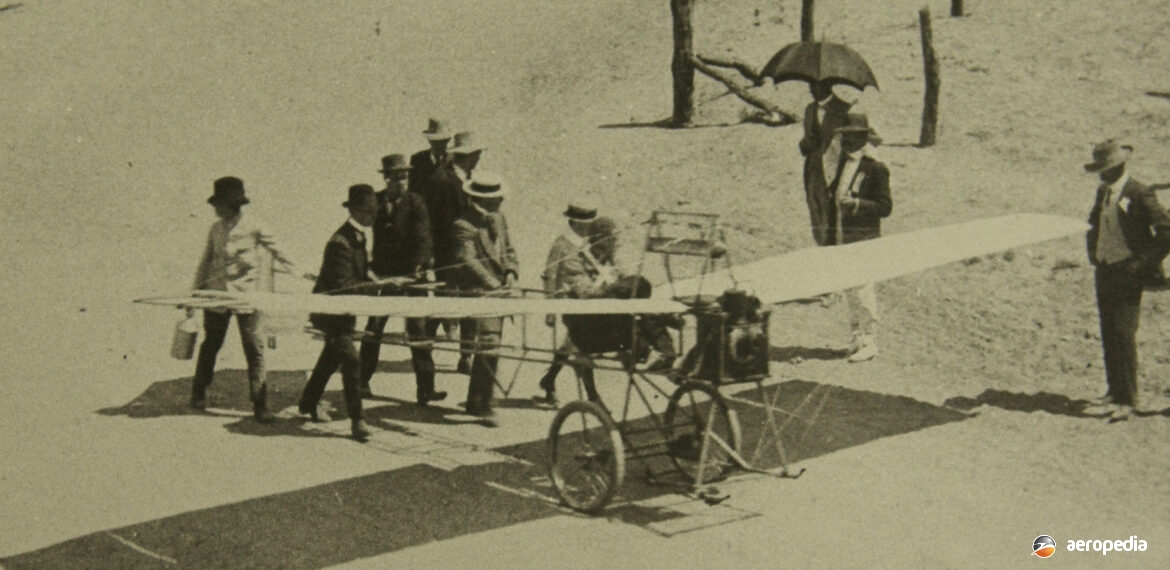Photograph:
Betteridge Monoplane during testing on a salt pan at Port Augusta (Betteridge family)
Country of origin:
Australia
Description:
Light monoplane
Power Plant:
One 5.22 kw (7 hp) Premier engine
Specifications:
- Wingspan: 6.09 m (20 ft)
- Chord: 0.91 m (3 ft)
History:
Allan Rupert Betteridge was born on 11 October 1892 and was educated in Broken Hill, NSW, becoming a motor mechanic. He had an interest in aviation and when he was about 15 years of age he commenced building gliders. Between 1906 and 1908 he built a biplane glider which had a wingspan of 12.19 m (40 ft) and a length of 8.22 m (27 ft). Work on the glider was carried out between 1906 and 1908 at “Sunnyside” in Torrens Street, Hackney, SA.
Allan Betteridge designed, built and flew a light monoplane at Port Augusta in South Australia in October 1912. This machine had a wingspan of 6.09 m (20 ft), a chord of 0.91 m (3 ft) and was powered initially by a single-cylinder petrol injection engine that he designed himself. However, he found this engine unreliable and replaced it with a borrowed 5.22 kw (7 hp) Premier engine which was calculated to develop a thrust of 38.5 kg (85 lb). With the Premier engine some attempts were made to fly and the machine flew for 55 m (180 ft) at a height of 30 cm (12 in) but on landing the undercarriage collapsed. The machine received some damage. Betteridge returned the engine to its owner and did not fly this aircraft again.
However, he continued his interest in mechanics and between 1907 and 1909 he built two engines, one a two-cylinder double-acting unit for which he made all parts and the radiator. It had a 10.16 cm by 10.16 cm (4 in by 4 in) bore and stroke. He also built a single-valve engine for aviation use complete with a propeller. He later took out a provisional patent on this unit in 1909.
Continuing his work as a mechanic, he spent some years working for Duncan & Fraser Ltd, eventually enlisting in the Australian Army in October 1915. He served in the infantry until he was transferred to the Australian Flying Corps as an Air Mechanic 2nd Class, commencing service at Point Cook VIC in 1916 and then proceeding overseas where he joined No 1 Squadron AFC in Egypt and Palestine. He remained there until 1919. Whilst in the Middle East during the Great War he designed a hydraulic interrupter for machine guns to fire through the propeller of aircraft, and was also instrumental in designing a bomb-sight that compensated for variations in the altitude of the aircraft. He was Mentioned in Despatches on 23 October 1917.
After demobilisation he worked as a Senior Instructor of Motor Mechanics in the class for Vocational Training of Returned Soldiers with the South Australian Education Department. He continued with his mechanical interests, as well as an interest in photography. He built a three-cylinder rotary engine and developed a Segmental Aerial Torpedo, a bombsight, and a Photographic Aerial Dart. He also worked on the development of an anti-tank gun. He passed away at the age of 81 on 2 July 1973.

